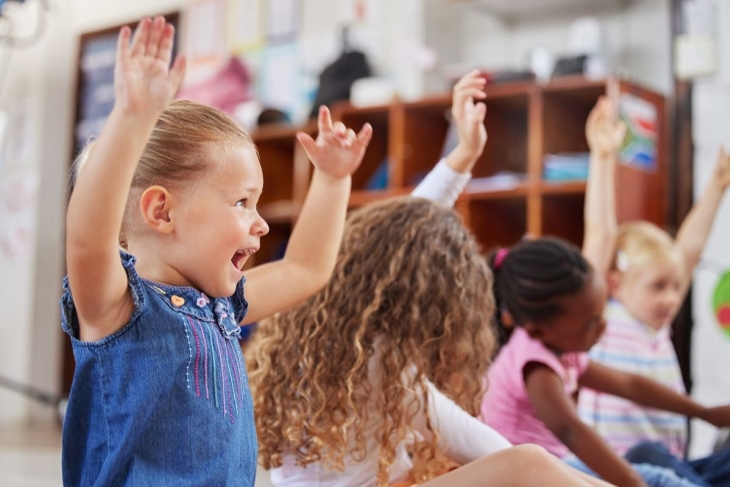The aspiration of early childhood education (ECE) is kindergarten readiness for its young learners, followed by strong academic achievement in elementary school and an array of positive social-emotional outcomes along the way (and beyond). Researchers have found evidence to support the positive impacts of ECE across these dimensions over the years, but the holy grail—evidence that the academic benefits persist rather than fade out over time—remains elusive. A recent study out of Oklahoma, however, touts an important breakthrough.
Researchers from the University of Oklahoma-Tulsa looked at a group of seventy-five children. Thirty-seven were randomly assigned as infants to participate in an “enhanced” Head Start program called Educare beginning in 2006, while the remaining thirty-eight participated in other ECE programs. Although that’s a small sample size, these seventy-five children were a subset of a much larger randomized-control trial comprising all of the various Educare sites, of which there are twenty-five across the country. The Educare program, which began with one school in Chicago in 2000, uses high-quality teaching practices, intensive family engagement, and data utilization to enhance the learning environment for students, and includes embedded professional development for staff. Additional features include year-round, full-day services; lead teachers with bachelor’s degrees; and dedicated family support staff with small caseloads and bachelor’s-level training.
Students in both groups began in infant care/ECE at around nineteen months of age and remained until the start of kindergarten. Control group students’ care and education arrangements ran the gamut—including public preschool, Head Start, community-based childcare centers, and family care—and changed occasionally up until the start of formal education. Most treatment group students also had other caretakers and educators outside of Educare prior to kindergarten, but were steady enrollees in Educare throughout. The treatment group consisted of slightly more boys than girls; the control group slightly more girls than boys. All families in both groups reported income below the federal poverty line based on family size, and all lived in under-resourced communities in and around Tulsa.
Children were followed through the end of third grade. Data included measures of executive function and assessments of early academic skills in literacy, language, and math collected through one-on-one administration of standardized tests twice per year. Different testing instruments were used based on students’ developmental level. Parents were surveyed each spring starting in kindergarten and continuing through third grade to provide information about the home, children’s activities, relationships between children and parents, and parental stress. Teachers completed surveys in the fall and spring of each year to provide information about students’ social-emotional development, behavior, and relationships at school. Classroom quality (K–3 only) was observed and rated each winter for both the treatment and control group, focusing on the areas of emotional support, classroom organization, and instructional support using the Classroom Assessment Scoring System.
Children in the treatment group demonstrated statistically significant increases in vocabulary, oral comprehension, and math scores as compared to their control group peers from preschool through third grade, after controlling for child and family characteristics and the limited range of classroom quality metrics. Additionally, treatment students attained scores at the national average in these three areas at the end of third grade, indicating that Educare graduates narrowed the gap with their more affluent peers across the nation.
Results on the behavioral dimensions were more mixed, with children in the treatment group showing higher skills on one of the two measures of executive function but equal outcomes in the area of social-emotional skills. Parents of children who attended Tulsa Educare reported fewer behavior problems when the children were preschoolers than parents of children in the control group, although teachers reported no differences in behavior in elementary school.
Does this meet the holy grail criteria of persistent positive effects for increased student achievement? The lead author of the study and the local Educare’s communications consultants seem to think so. The model appears solid, as does the consistency of attendance for the children in the treatment group. Having low-income students performing at the national average in certain aspects of third grade achievement is a positive finding, but it feels too early to declare full victory on these grounds. The switch from “learning to read” to “reading to learn” is a typical point at which fadeout begins—not covered here—not to mention the fact that these boys and girls had not yet hit the academic buzzsaw of pandemic-mitigation school closures by the time the analysis stopped. Only time—and more data—will really tell the tale.
SOURCE: Diane M. Horm, Shinyoung Jeon, Moira V. Clavijo, and Melissa Acton, “Kindergarten through Grade 3 Outcomes Associated with Participation in High-Quality Early Care and Education: A RCT Follow-Up Study,” Education Sciences (August 2023).


